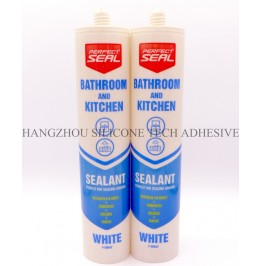Bathroom sealants play a critical role in preventing water damage, mold growth, and structural issues by creating watertight joints around tiles, sinks, and showers. However, improper selection or application of sealants can lead to unwanted chemical reactions with tile glaze, causing discoloration, etching, or adhesion failure. Below are detailed strategies to avoid these issues and ensure long-lasting, aesthetically pleasing results.

Tile glaze, a protective glass-like coating applied to ceramic or porcelain tiles, is sensitive to certain chemicals found in sealants. Reactions can occur when incompatible materials interact, leading to visible damage or compromised performance.
Many sealants contain solvents, acids, or alkaline compounds that may erode or stain tile glaze. For example, solvent-based sealants with high concentrations of acetone or toluene can dissolve glaze coatings over time. Similarly, acidic cleaners used during or after application may react with alkaline components in the glaze, causing etching or cloudiness.
Not all tiles are equally susceptible. Glossy, high-gloss, or polished tiles with thin glaze layers are more prone to damage than matte or textured tiles with thicker coatings. Transparent or light-colored glazes may also show discoloration more readily than darker hues. Testing the sealant on a small, inconspicuous area of the tile before full application is crucial to identify potential reactions.
Choosing the right sealant type minimizes the risk of chemical interactions with tile glaze.
Neutral-cure sealants, such as silicone-based or polyurethane variants, are less likely to react with tile glaze compared to acidic-cure alternatives. These formulations avoid harsh chemicals that could erode or discolor the glaze. When selecting a sealant, review the manufacturer’s specifications to confirm compatibility with ceramic or porcelain surfaces.
Solvent-based sealants, while effective for certain applications, often contain volatile organic compounds (VOCs) that can damage tile glaze. Water-based or low-VOC sealants offer a safer alternative, as they dry through evaporation rather than chemical reactions with the substrate. These products are also easier to clean up and typically emit fewer fumes during application.
Even if a sealant is chemically compatible, poor adhesion to the tile glaze can lead to peeling or cracking over time. Ensure the sealant is designed for high-moisture environments like bathrooms and provides strong, flexible bonding to both the tile and adjacent surfaces (e.g., bathtubs or countertops).
Even with compatible materials, improper application can trigger reactions or adhesion issues. Following best practices ensures a durable, reaction-free seal.
Before applying sealant, clean the tile and joint thoroughly to remove dirt, grease, or residual cleaning agents. Use a non-abrasive cleaner and a soft cloth to avoid scratching the glaze. Rinse with water and allow the surface to dry completely, as moisture trapped beneath the sealant can promote mold growth or weaken adhesion.
Temperature and humidity play a role in how sealants interact with tile glaze. Apply sealant in a well-ventilated area with moderate temperatures (typically between 50°F and 80°F or 10°C and 27°C). Extreme cold can slow curing, while high humidity may cause bubbling or uneven drying. Avoid applying sealant during rainy or overly humid days.
A caulking gun with a smooth, consistent flow reduces the risk of over-applying sealant, which can lead to excess material pooling on the tile surface. Use a small, angled nozzle to direct the sealant precisely into the joint. After application, smooth the sealant with a damp finger or a specialized tool, taking care not to spread it onto the tile glaze unnecessarily.
Proper maintenance after sealant application helps prevent long-term reactions and extends the lifespan of both the sealant and tile glaze.
Sealants require time to cure fully and achieve maximum adhesion. Follow the manufacturer’s recommended curing period (often 24–72 hours) before exposing the sealed area to water or heavy use. Premature contact with moisture can weaken the bond and increase the likelihood of reactions with the tile glaze.
After curing, clean the sealed area with mild, pH-neutral cleaners and soft sponges or cloths. Avoid abrasive scrubbers, steel wool, or harsh chemicals, which can scratch the glaze or degrade the sealant over time. Rinse thoroughly and dry with a clean towel to prevent water spots.
Periodically check the sealed joints for discoloration, peeling, or bubbling. Early detection of minor issues allows for prompt touch-ups before they escalate into larger problems. If discoloration or etching appears on the tile glaze, consult a professional to assess whether the sealant needs replacement or if the tile requires refinishing.
By understanding the chemical interactions between sealants and tile glaze, selecting compatible materials, applying them correctly, and maintaining the sealed surfaces, homeowners and contractors can achieve durable, attractive bathroom finishes without compromising the integrity of the tile.
Copyright 2019 by Hangzhou Silicone Tech Adhesive Co., Ltd. All rights reserved.
Bathroom Sealant | Acrylic Sealant | Dow Corning 795 | Aquarium Sealant | Dow Corning 732 | Clear Silicone Sealant | Polysulfide Sealant | Glazing Sealant | Mirror Sealant | IG Sealant
Powered by Onepound